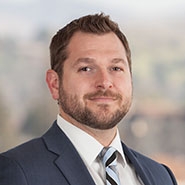Chapter 13
A Chapter 13 bankruptcy is a bankruptcy payment plan that allows you to retain your property and pay back all or a portion of your debts over a period of time. Under this chapter, you and your attorney propose a payment plan that fits your budget. Each month you will pay the Trustee the fixed budget amount over a period of three or five years. A Chapter 13 bankruptcy is most appropriate for an individual, with income, who does not currently have the ability to pay all of his or her debts in full. Priority creditors are paid first. These creditors are government agencies like the IRS or the EDD. Secured creditors are paid after the priority creditors. These creditors are mortgage banks, auto loan banks or other creditors that have a lien against property that you still own. Unsecured creditors are paid last and often are not paid at all in a Chapter 13. The Means Test is used to determine if you will be on a 3-year or 5-year payment plan. If you satisfy the Means Test, you can choose between the 3- and 5-year plan. If you do not satisfy the Means Test, you must follow the 5-year plan. You must have income to file for bankruptcy under Chapter 13 because you are paying back creditors through a payment plan. To be eligible to file for Chapter 13 bankruptcy, an individual must have no more than $394,725 in unsecured debt, such as credit card bills or personal loans. They also can have no more than $1,184,200 in secured debts, which includes mortgages and car loans Participation Process Participation in Chapter 13 is the same as Chapter 7 in that we must still determine your assets. Instead of liquidating your assets, the payment plan will reflect the lump sum the Trustee would receive if your assets were liquidated. For example, if you have $10,000 in non-exempt assets, your payment plan will be a monthly amount by which you will pay back no less than $10,000 over your 3- or 5-year payment plan. The 341 Meeting of Creditors typically takes longer than a Chapter 7 Meeting of Creditors because the Trustee will review parts of the plan with you at the meeting. Your first payment of the payment plan will be 30 days from the filing of the bankruptcy, and this is usually before the first meeting. The payment must be made via cashier’s check.

